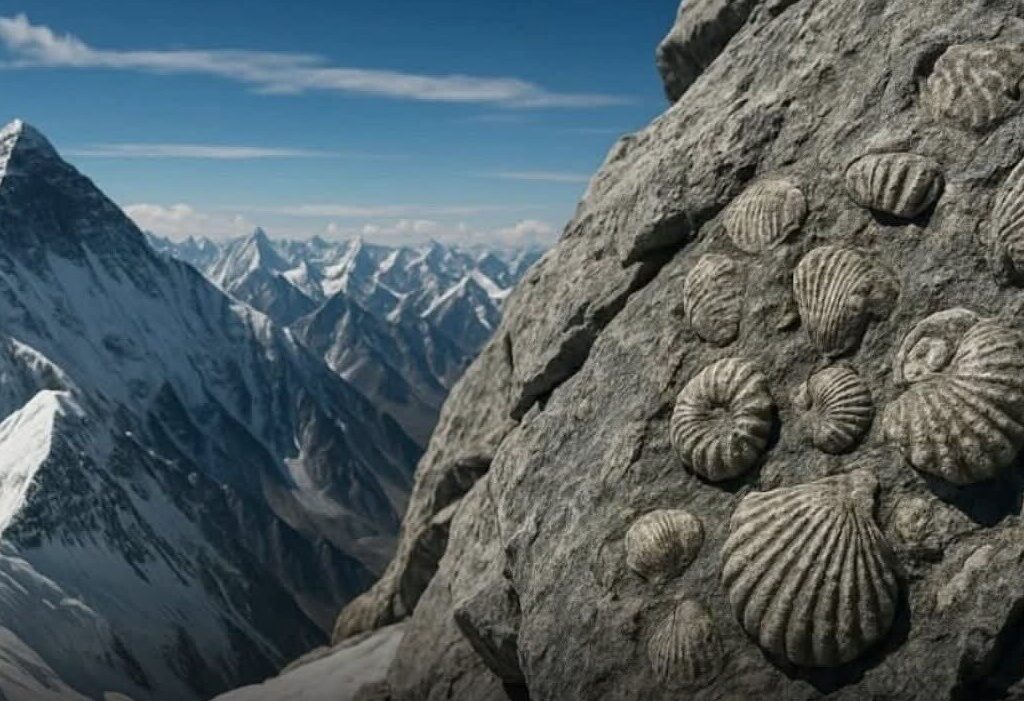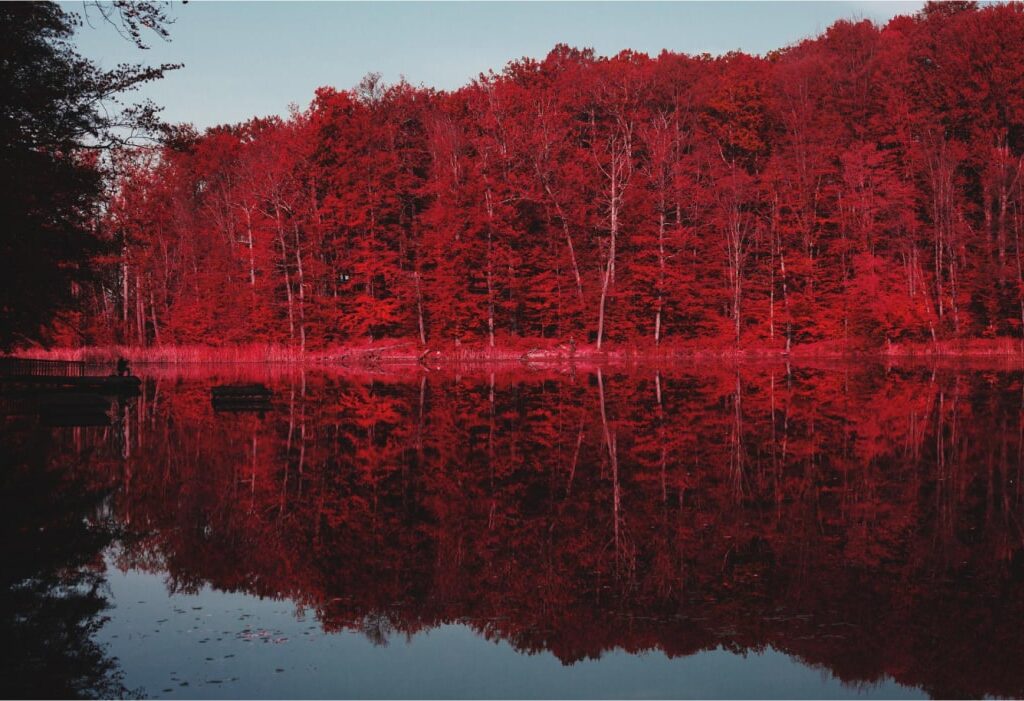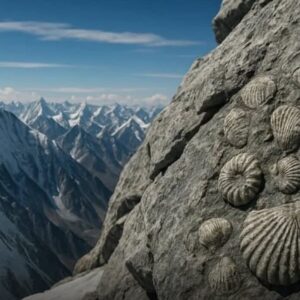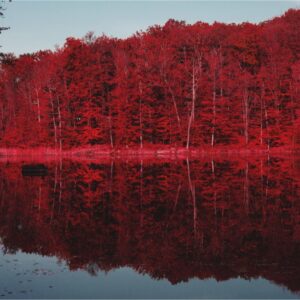Imagine the tallest mountain in the world was once at the bottom of an ancient ocean! It sounds incredible, but scientists discovered that Mount Everest’s highest point was indeed once the seafloor of an ancient ocean. This amazing story shows us how our planet is constantly changing, even though we.
The Secret Hidden in the Rocks
At the very top of Mount Everest, 29,032 feet above sea level, something extraordinary lies beneath the snow and ice. The rocks that make up the summit are gray limestone that was deposited on the seafloor 470 million years ago. This limestone, called the “Qomolangma Limestone” by scientists, contains marine fossils including trilobites, brachiopods, ostracods and crinoids — all sea creatures that lived in warm, shallow ocean waters long ago.
These fossils are proof that the rocks forming Everest’s peak were once part of an ancient ocean called the Tethys Ocean. The limestone was formed when these tiny sea creatures died and their shells accumulated on the ocean floor, layer by layer, over millions of years.
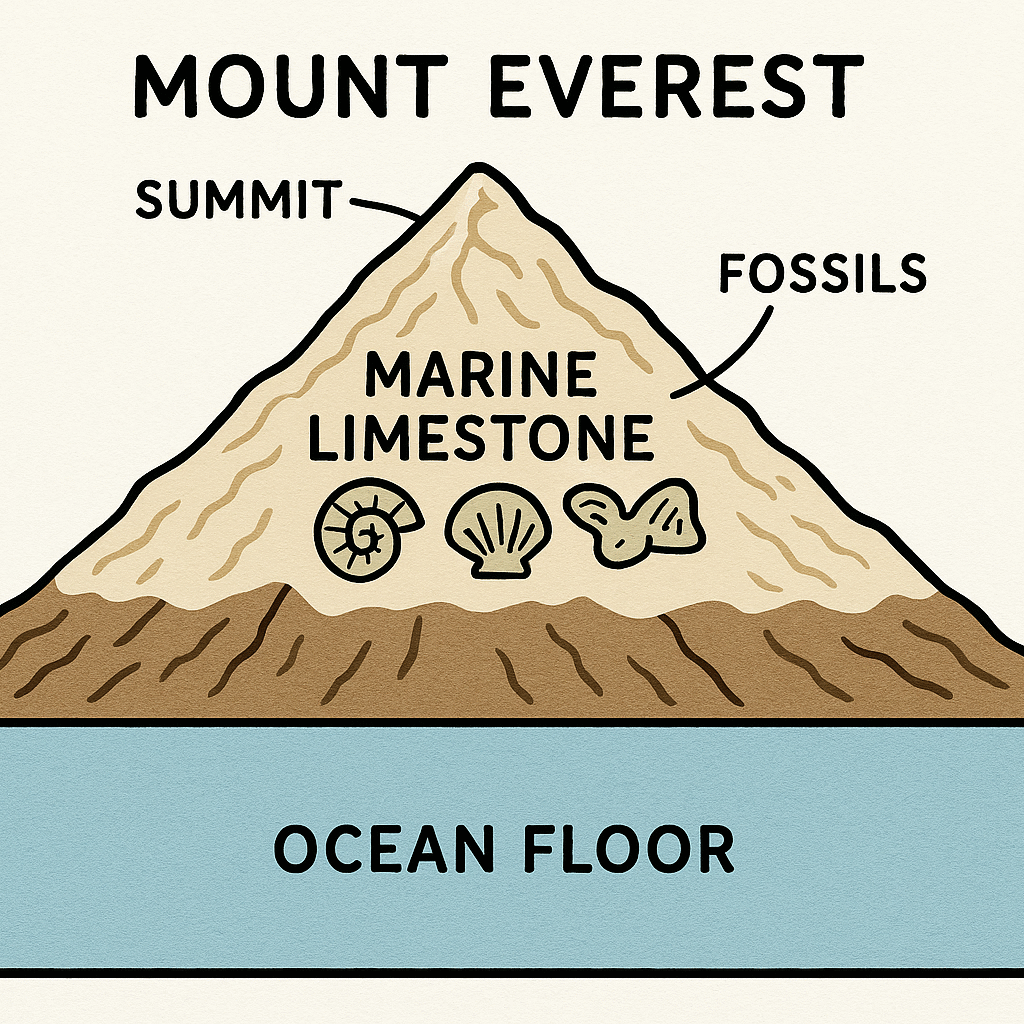
How Did Ocean Floor Become a Mountain?
To understand this incredible transformation, we need to learn about Earth’s moving puzzle pieces called tectonic plates. Our planet’s outer layer, called the lithosphere, is broken into large pieces that constantly move very slowly — about as fast as your fingernails grow.
About 200 million years ago, India was actually a large island far away from Asia, separated by the ancient Tethys Ocean. But India was on the move! The Indian Plate began drifting northward at an amazing speed — up to 15 centimeters per year, which is super fast for a tectonic plate.

The Great Crash That Built Mountains
Around 50–60 million years ago, something spectacular happened — India crashed into Asia! This wasn’t a quick crash like a car accident, but a slow-motion collision that took millions of years. When these two enormous pieces of Earth’s crust met, neither could sink beneath the other because they were both made of light continental rock.
Instead, the collision caused the rocks to crumple and fold, just like what happens when you push two pieces of paper together. The ocean floor that was once between India and Asia got squeezed and pushed upward, forming the magnificent Himalayan Mountains, including Mount Everest.
A Mountain That’s Still Growing!
Here’s something even more amazing — Mount Everest is still growing today! The mountain rises about 4 millimeters (about the thickness of four sheets of paper) every year because India is still pushing into Asia. Scientists have discovered that Mount Everest has been rising for the past 20 to 24 million years.
The limestone rocks at the summit have been altered by tremendous heat and pressure during this mountain-building process. While they started as simple ocean sediments, they’ve now become metamorphic rocks — rocks that have been changed by the extreme conditions deep inside the Earth.
Ancient Ocean Secrets in the Himalayas
Scientists have made another incredible discovery in the Himalayas. Researchers from India and Japan found tiny droplets of 600-million-year-old ocean water trapped in mineral deposits. These water droplets are like “time capsules for ancient oceans” that help scientists understand what Earth’s oceans were like hundreds of millions of years ago.
This ancient water was found in the Kumaon Himalayas and dates back to a time when Earth experienced “Snowball Earth” — a period when thick sheets of ice covered our planet. These discoveries help scientists understand how life evolved on Earth and how our planet’s climate has changed over time.
What This Means for Us
The story of Mount Everest teaches us several important things:
Earth is constantly changing — Even though we can’t feel it, our planet’s surface is always moving and changing. The mountains, oceans, and continents we see today looked very different millions of years ago.
Rocks tell stories — By studying the rocks and fossils found in mountains, scientists can piece together Earth’s history, like reading a giant book written in stone.
Time works magic — Given enough time (millions and millions of years), incredible things can happen — like turning an ocean floor into the world’s highest mountain.
The Continuing Journey
Mount Everest’s journey from seafloor to summit is one of the most amazing stories in Earth’s history. What was once home to ancient sea creatures swimming in warm, tropical waters is now the highest point on our planet.
This transformation reminds us that our Earth is a dynamic, ever-changing planet where today’s geography is just a snapshot in an ongoing story that has been unfolding for billions of years. Every time someone climbs to Everest’s summit, they’re standing on rocks that once lay at the bottom of an ancient ocean — a connection between the deepest depths and the highest heights that shows just how amazing our planet really is.
The next time you look at a mountain, remember — you might be looking at what was once the bottom of the sea, pushed up by the incredible forces that shape our world. Earth’s story is written in rocks, and Mount Everest is one of its most spectacular chapters.


